The Spanish sport climbing venue of Siurana, in the heart of Catalunya, is no great secret. With so many classic hard test-pieces surrounding this beautiful cliff-top village and seemingly just as many of the world's best climbers visiting every winter, it never stays out of the climbing press for long.
But what we don't hear about as often is just how much this area has to offer those seeking routes without an 8 or 9 in front!
Whether you're a Siurana virgin or have been a regular winter migrant since the early days, with so much rock in the area and a brand new guide just out you're sure to discover something new waiting for you...
So realistically what is there on offer in the 5s and 6s?
Quite a lot actually! As with the vast majority of sport climbing areas you'll visit anywhere, the lower your maximum grade then the more limited is your choice. Similarly, some sectors might have to be ruled out altogether. But on the positive side, the climbing in Siurana is made up of a huge number of different sectors, all with slightly different approaches, views and characteristics. Although there's no single sector with a large concentration of lower grade routes, most of the sectors have a handful of lines within each grade band. It is easy to visit a couple of crags in one day and cherry pick the best routes at your given grade and then head somewhere completely different the following day. This makes for a really varied and interesting trip, and that's without even venturing out of Siurana!
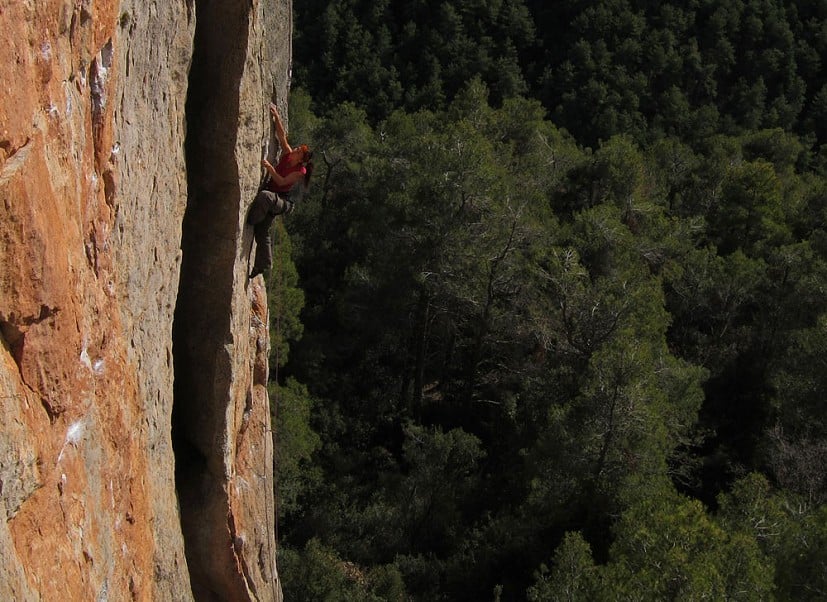
Additionally, with so many completely separate sectors spread out along the village promontory and valley below, even during the busiest of periods it never feels particularly crowded. If you do happen to be invaded by a big, noisy group you can easily switch sectors and have a crag to yourself! Also, just as importantly -depending on the time of year you visit and the weather, temperatures, wind direction etc - you can generally always find a section of cliff which will offer good conditions due to the differing aspects of the various sectors.
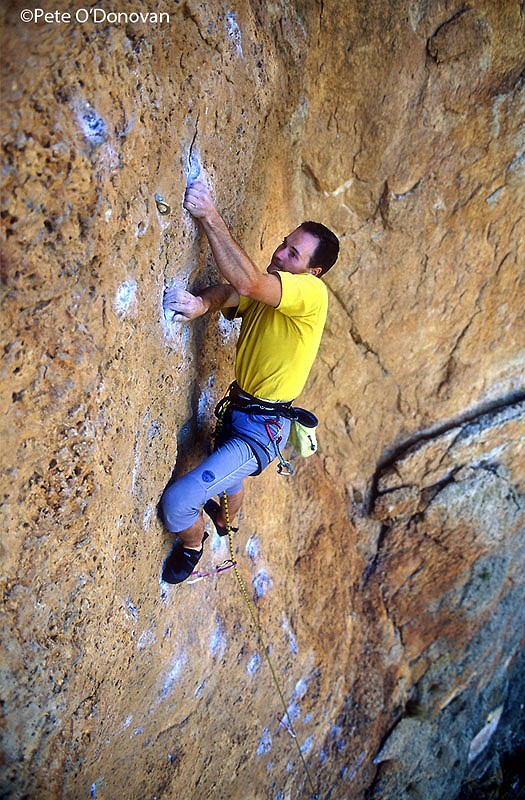
My recommended routes through the grades, up to 8a+
5+ Súper fisura (Grau dels Masets Esquerra)
6a Farigola (L'Herbolari)
6a+ Filiprim (Siuranella Centre)
6b Tan san fot (Esperó Primavera)
6b+ Like a cuc (Siuranella south)
6c Cenar, beber, emborracharse, vomitar, dolor de cabeza. (Grau dels Masets de Baix)
6c+ Toca-me-la Sam (Can Piqui Pugui)
7a Tikis mikis (Siuranella Centre)
7a+ Bindelef (Can Codolar)
7b La loca más loca del bodevil ** (Ca la Boja)
7b+ Llargaruda (L'Aparador)
7c Skateboy (Can Codolar)
7c+ Pota d'elefant (L'Olla)
8a Un rato en cada postura (Can Piqui Pugui)
8a+ Disbarauxa extension (L'Aparador)
**Unashamedly chipped / drilled into existence but it makes for a fantastic route!
General Layout and Access
The sectors in Siurana have classically been divided between the 'village' crags and the 'valley' crags, based on where you access them from. However, while a short drive obviously does leave you with less of a walk-in to the more remote sectors, in reality all the crags around Siurana are easily accessible on foot from the campsite or the village parking. A car does come in handy however, if you decide to venture to one of the other areas in the region (see the list of recommendations below).
The Climbing
On most sectors the rock is generally very solid, bulging orange and grey streaked limestone of immaculate quality. Aesthetically it really is beautiful to look at, especially on the frequently sunny days that occur in Siurana, and you won't be disappointed when you climb on it either. To sum up the climbing in Siurana in one word: CRIMPS...and lots of them! But you'll also find pockets in abundance, as well as some incredible tufas (sector L'Olla) and even a few slopers if you venture onto one of the sandstone routes! Siurana has often been described as a classic 'old-school' destination, with stiff grades and super-technical climbing; factors which may have led to it going slightly out of vogue in recent years, in favour of the long and pumpy stamina routes available at more recently developed crags in Spain. Whilst it is true that the climbing is generally vertical, highly technical and often cruxy, visiting Brits used to this style at home should get on very well. And with the publication of the new guide in November 2010 any obvious grade anomalies that did exist have been ironed out (in fact, pretty much all of the changes went in the way of a downgrade).
Sectors for cold and or windy winter days
- Can Piqui Pugui
- L'Olla
- Siuranella Centre, South & El Solarium
- Salt de la Reina Mora
- Can Tonigros
- Corral Nou / El Ditot
Recommended sectors to avoid the sun
- Reserva India
- Can Codolar / L'Aparador
- El Pati and Siuranella East – These two sectors, on opposite sides of the valley, make for a great combination in hot weather. You can climb at El Pati in the morning shade then have a break for lunch before switching to the other side for the afternoon.
Other crags in the area
While there's enough to keep you going for a lifetime just in Siurana, if you have transport and can spare the time then, regardless of the grade you climb at, it's worth checking out some of the other crags in the region. Within 30-45mins drive are the following excellent areas; well worth at least a day, if not more:
La Mussara – spectacularly positioned on the edge of a plateau overlooking the coast, this collection of easily accessed sectors offer some of the best low and mid grade climbing outside of Siurana, and with it being one of the oldest sectors in the region to be developed it now seems to have gone distinctly out of fashion, so expect zero crowds!
Margalef - Zona del Panta North – you could easily spend a few weeks or longer just in this one area. The climbing quite literally covers all grades (from F4 - F9a+) and is concentrated within two valleys lying roughly parallel to each other close to the village of Margalef itself. The rock is conglomerate so expect pockets, pockets and more pockets...oh and also a few tufas! The frequently updated guidebook is available from the refuge in Margalef (€10).
Montsant – the same rock type and a very similar climbing style to Margalef, however the routes are generally much longer here so take a long rope! The climbing is spread along the edge of the magnificent mountain range of Sierra de Montsant, visible from everywhere in the area. A huge number of different sectors exist right the way along the ridge and provide excellent long routes in wonderful positions overlooking Siurana and the whole valley below. A slightly longer walk in to all of the sectors allows you to pack a lunchbox, escape the crowds and make a day of it. The guidebook is available from Goma II in Cornudella.
Arboli – this is without doubt the very best sector among the many Arbolí crags. Similar in style and rock type to Siurana, but in general with much longer pitches up to ~45m!
Masriudoms – a lonely outcast from the major tufa crags further north in Catalunya, this huge cave is THE place to head on the coldest, rainiest and windiest days during the winter. The only downside is the very limited amount of climbing for those operating below F7b.

Logistics
When to Go
Spring and autumn usually offer the most pleasant and reliable weather for climbing, however the season extends right throughout the winter months thanks to the frequently cold but dry and sunny days at this time of year, when conditions are often at their best. Although many excellent shaded sectors exist in Siurana, which can offer good conditions on the warmer days, the thin and crimpy nature of the climbing means that mid summer is the least recommendable time to visit.
How to Get There
Most people visit on a fly-drive basis, with a large number of flights available year-round to Barcelona from many airports throughout the UK. More conveniently, flights are available to Reus which makes for a much shorter drive on arrival in Spain, although frustratingly in the last few years these flights have stopped running between ~October and late March.
Another possibility for people with more time to spare is taking the long drive down through France, although with the expense of the toll roads in France and northern Spain combined with the increase in fuel prices this is becoming the least economical way to get here. For those without a car on arrival in Spain, access to Siurana by public transport is possible, albeit a longer and less convenient option. Regular trains take you from Barcelona to Reus, and from here you'll have to take a taxi to Siurana (€40-50) or get across town to the bus station and take a bus to Cornudella (although these only run a few times a day so you may end up having to stay a night in Reus if it's a late flight). From Cornudella either walk the last section up the hill, or get your thumb out and hitch a ride!
Accommodation Advertise here
No Premier Listings found in this area
As with most climbing areas in Spain, by far the most popular among both the local climbers and long-term visiting foreigners is with camper-vans in the many car parks and laybys around Siurana and Cornudella. At present these 'unofficial' overnight stays are tolerated in Siurana, but who knows how long this will remain the case with Siurana's continuing popularity (and associated problems with human waste and toilet paper in the surrounding areas!). For the regular short-term visitor the closest accommodation to the crags is in the campsite just outside Siurana village, which has space for tents, camper-vans and also a number of 4-6 person cabins (walking distance to all the crags from here). Alternatively there are a number of apartments and a refuge in Cornudella (a 10-15 min drive or a long uphill walk to the crags every day from here). The most popular of these being the Cal Giral apartments (www.calgiral.com) or the ClimbingWorld bar refuge. Further afield there are campsites in Vilanova de Prades and Ulldemolins and a number of refuges also exist in the surrounding villages such as Arbolí, La Mussara, Cabacés, and Margalef.
Food and Supplies
If you're after a big food shop then stop off at one of the hypermarkets in either Reus, Tarragona or Lleida (depending on where you're coming from) before you head up to Siurana. There are a few small supermarkets in Cornudella, as well as cafes, bars and bakeries, but obviously expect to pay more for the basics.
Outdoor Shops Advertise here
No Premier Listings found in this area
Climbing gear is available from Goma II, opposite the church in Cornudella, where you can pick up a copy of the new guide and also get your boots resoled if necessary! Alternatively there is a Decathlon on the outskirts of Reus.
Gear
The usual sport climbing rack of about 10-15 quickdraws, plus a 60m rope should get you up most things in Siurana. However, there are now some excellent 35-40m(!) pitches in the area so a 70 or even 80m rope would be useful if you don't want to miss out (especially at sectors El Pati, Salt de la Reina Mora, L'Aparador, Can Codolar in Siurana and also at El Falcó or many of the Montsant crags).
Instructor/Guides Advertise here
No Premier Listings found in this area
Other Activities
If you're feeling lazy or need a complete break from activity then a day spent relaxing in and around the village is highly recommended. Siurana village is a popular tourist destination with non-climbers, containing a couple of nice bars and restaurants, and generally just being a very pleasant place to enjoy a relaxed lunch or ice cream in the sun! If you're feeling more energetic then there is an abundance of marked walking tracks through the olive groves, vineyards and forested hills in the area. Probably the best of these start from the village of Morera de Montsant, where you can either follow gentle zig-zagging trails up to the top of the Serra de Montsant ridge or take a more direct line up one of the Via Ferrata routes. Either way, you'll be rewarded with stunning views across the whole of the Prades area and down to the coast. Other options include kayaking on the Pantà de Siurana, numerous cellars and wine tours throughout the celebrated Priorat region, and visits to the local villages, castles and churches. Check out the Tourist Office in Cornudella for maps and more information.
Ali Kennedy - Growing up near Huddersfield, he began climbing on the Peak and Yorkshire grit, and then later Northumberland sandstone during his time at university in Durham. Following his first visit to Malham Cove one particularly wet summer he was bitten by the sport climbing bug and has concentrated on this in recent years, culminating in a move to Catalunya in 2008. He now lives with his girlfriend just outside Reus and climbs most days during the week on the crags featured in this article. However, he does occasionally miss the trad cragging in the UK! Thanks to Pete O'Donovan for his advice and pics.



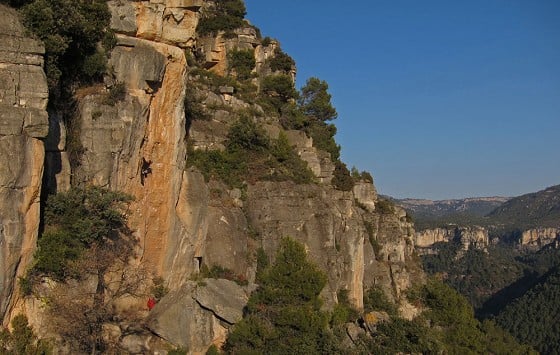

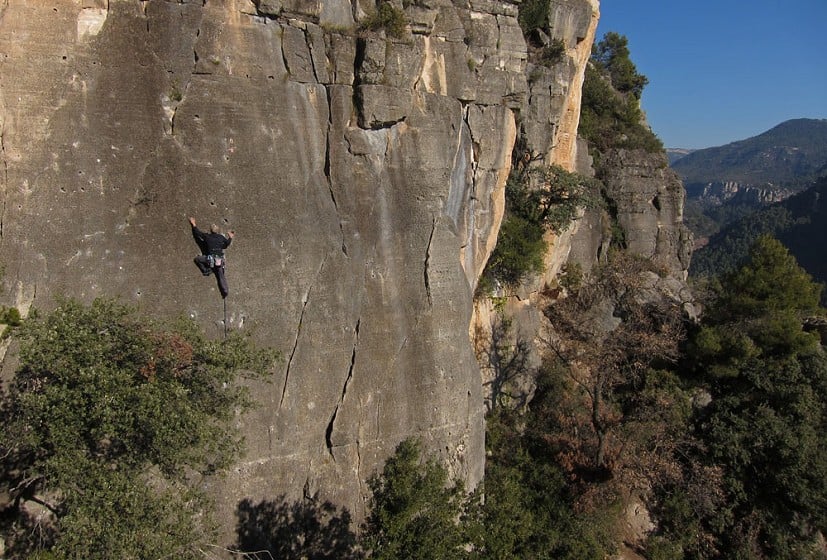
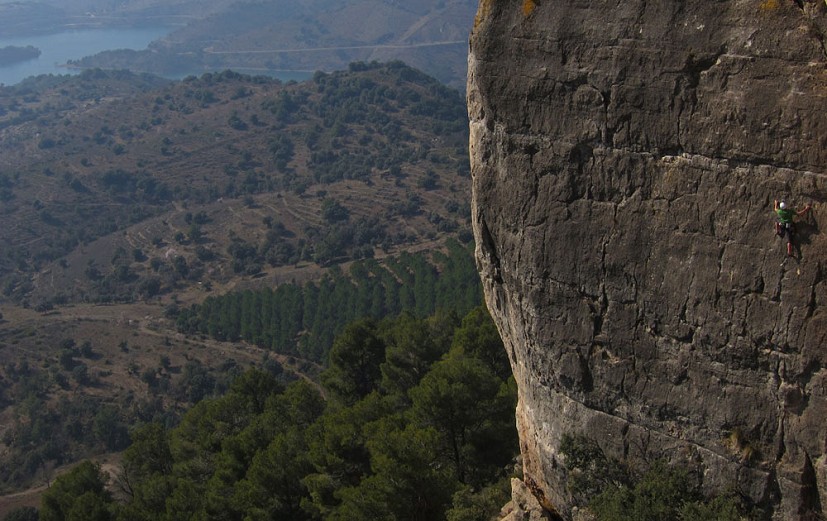
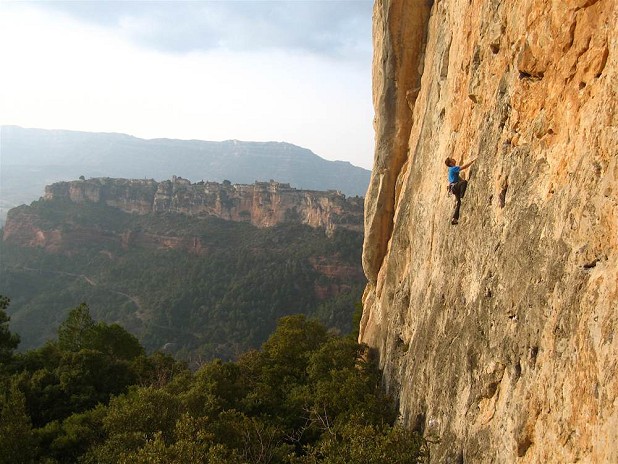
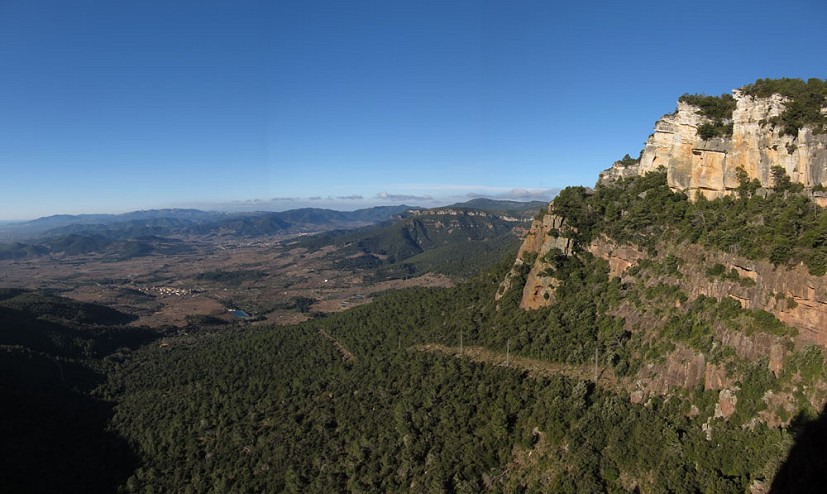
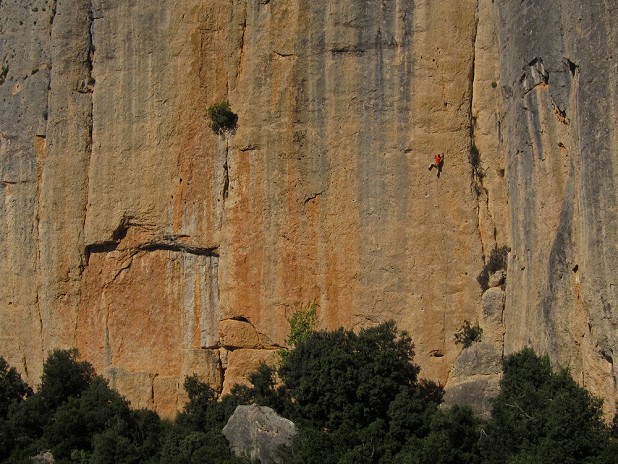

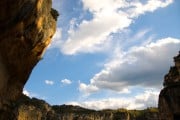


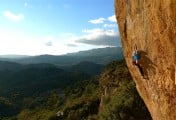
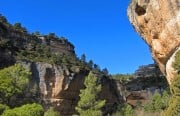

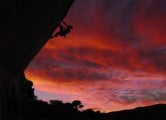
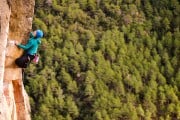
Comments